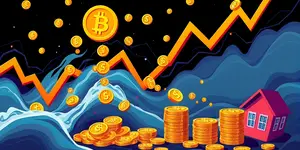
Across living rooms and backyards, a fresh wave of retail traders is seizing the spotlight in global markets. What once seemed a fleeting phenomenon has returned with renewed vigor, as ordinary investors rally behind their favorite tickers in a collective push that transcends traditional financial analysis. This resurgence of meme stocks demonstrates the power of social sentiment and virality in reshaping market dynamics.
Meme stocks are distinguished by price movements driven not by fundamental financial metrics but by online hype and communal enthusiasm. Unfolding across platforms like Reddit’s r/wallstreetbets, X (formerly Twitter), and YouTube, these trades thrive on coordinated momentum. Retail investors, often armed with low-cost brokerage apps, converge around shared narratives, propelling dramatic rallies—and sometimes steep declines.
Key traits of meme stocks include:
The archetype of this movement emerged in early 2021 when GameStop (GME) captivated the world with a staggering rally, surging over 100 times its baseline price. Spearheaded by grassroots retail actions on Reddit, that event unlocked widespread fascination and paved the way for other names like AMC Entertainment (AMC) and Bed Bath & Beyond (BBBY).
During the height of the COVID-19 pandemic, remote work and excess savings fueled an influx of new retail traders eager for connection and opportunity. Memorable moments included:
Retail participation in U.S. equity markets doubled during the pandemic, swelling from around 10% of trading volume to a peak of 26% in January 2021. In the UK, major trading apps reported 1.15 million new accounts in the first four months of that year, half of which opened in January alone.
This surge brought forward a younger, more diverse cohort of investors. Technology-savvy and driven by community, these traders have reshaped the market landscape and reshuffled traditional power dynamics.
In early 2025, familiar tickers like GameStop and AMC awoke from dormancy as threads on social platforms buzzed with fresh strategies. Improved market sentiment, accumulated savings, and the gamification of trading platforms lowered barriers for first-time investors, reigniting the phenomenon.
Digitalization has made participation both seamless and engaging. Push notifications, customizable dashboards, and community-driven content encourage collective action and accelerate inflows into targeted stocks.
Social media coordination—sometimes explicit, often emergent—allows ordinary investors to rival institutional power. By amplifying bullish sentiment through memes, influencers, and discussion threads, these communities can generate real-world financial consequences.
Short squeezes remain the hallmark of meme stock episodes, creating acute liquidity pressures on short sellers. This dynamic has drawn regulatory scrutiny and raised questions about market stability, as rapid price spikes can trigger margin calls and unexpected volatility.
While the potential for outsized gains is alluring, meme stocks carry extreme volatility and unpredictability. Prices can ascend to unsustainable heights before collapsing just as swiftly, leaving latecomers vulnerable to significant losses.
The meme stock movement symbolizes a profound shift in market dynamics, handing a degree of influence back to retail traders. The balance between Wall Street institutions and self-organized collectives has never been more fluid.
Accessible brokerage platforms and low or zero commission fees have democratized investing—but also introduced new vulnerabilities. Fintech innovations, once praised solely for inclusion, now face debates over responsible design and consumer protection.
As we navigate this evolving landscape, investors must balance enthusiasm with diligence. The spirit of community-driven investing offers both inspiration and cautionary lessons. By understanding the mechanics behind meme stocks—from viral narratives to short squeezes—retail traders can participate responsibly and harness collective energy for long-term benefit.
The renewed retail interest in meme stocks reveals a deeper transformation: a generation asserting its voice in financial markets. When guided by education and tempered by thoughtful risk management, that voice holds the potential to reshape finance in ways yet to be imagined.
References













